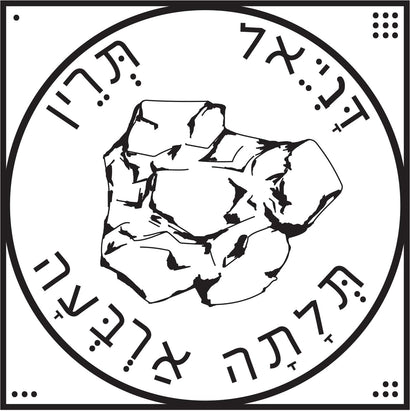Curriculum Etiquette / Uniform
- You must obey your instructor(s).
- When speaking to your instructors, you will conclude with “Sir”... e.g., “Yes Sir” or “No Sir”.
- No jewelry, watches, shoes, or socks allowed during class. Exceptions will be made at the instructor's discretion, especially for medical monitoring devices, or wearing shoes to protect an injury of the foot. Instructors may wear a timepiece if needed. However, for the safety of other students, none of the usual exceptions can apply while sparring.
- Wear the official uniform during class.
We do not require, however we suggest you bring a water bottle. We may periodically allow short water breaks during class. Also, drink plenty of water throughout the entire day before class, and be careful not to over-eat before class.
"Formal" Uniform

The formal uniform is a standard black karate uniform with patches attached. The specific patches are whatever patches your school/program has decided, but in this case we are showing the Lions Academy patch together with the Seal patch.
A belt must be worn for the uniform to be considered a formal uniform. The formal uniform must be worn during belt tests, award ceremonies, or any official demonstrations. We have them available for $25 each, if desired.
Tie the uniform top with the left flap over top, and tie the belt as shown:
"Informal" Uniform
We suggest that most new students start with a simple informal uniform because it's cheaper and easier. No belt to tie, no patches to sew, etc, and you'll probably still want to have an informal uniform available even when you own a formal one.
The informal uniform is any solid color black pants that will not tear if you did the splits (karate pants, sweatpants, etc) and any solid color black t-shirt. This enables you to purchase an acceptable uniform inexpensively and from a variety of sources (Family Stores, thrift stores, etc).
Long or short sleeves may be used. "Solid color" means no stripes, patterns, large logos, text, or images (except for our own logos). You may wear your belt with the informal uniform if you choose. The informal uniform may be worn during regular class, but NOT during belt tests, award ceremonies, or any official demonstrations.
Here is an example of an acceptable variant of the informal uniform:

Ranks
The curriculum is divided into rank categories.
In class, lower rank students are not necessarily restricted to the lower rank curriculum. But, you won't be expected to be proficient in any curriculum other than the white belt curriculum for your first test.

Additional information about our "Seal" patch:

Everything in the seal has meaning. The circle within a square can be found on many early temples. In those temples, the square metaphorically signifies the earth (as in, the "four corners of the earth"), and the circle signifies the celestial sphere.
The inscription within the circle is Aramaic. It reads "Daniel 2 3 4" (Daniel 2:34)
The center symbol, in turn, has five distinct pieces that are numbered and are bound together with heavenly mortar, in a special "counterclockwise" arrangement. The counterclockwise rotation is how you loosen, or "open" things-- so in this case it represents the opening or beginning of a new era.
The dots in the corners represent the numbers 1, 9, 3, and 5.
